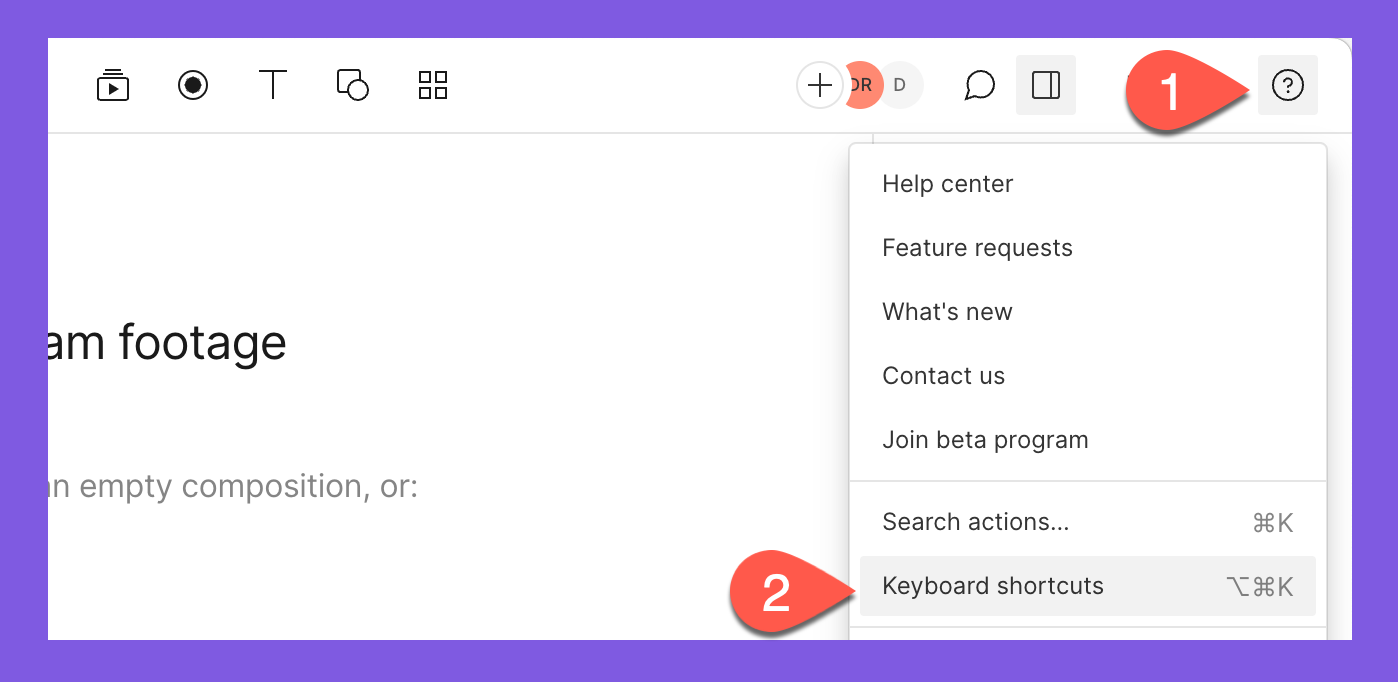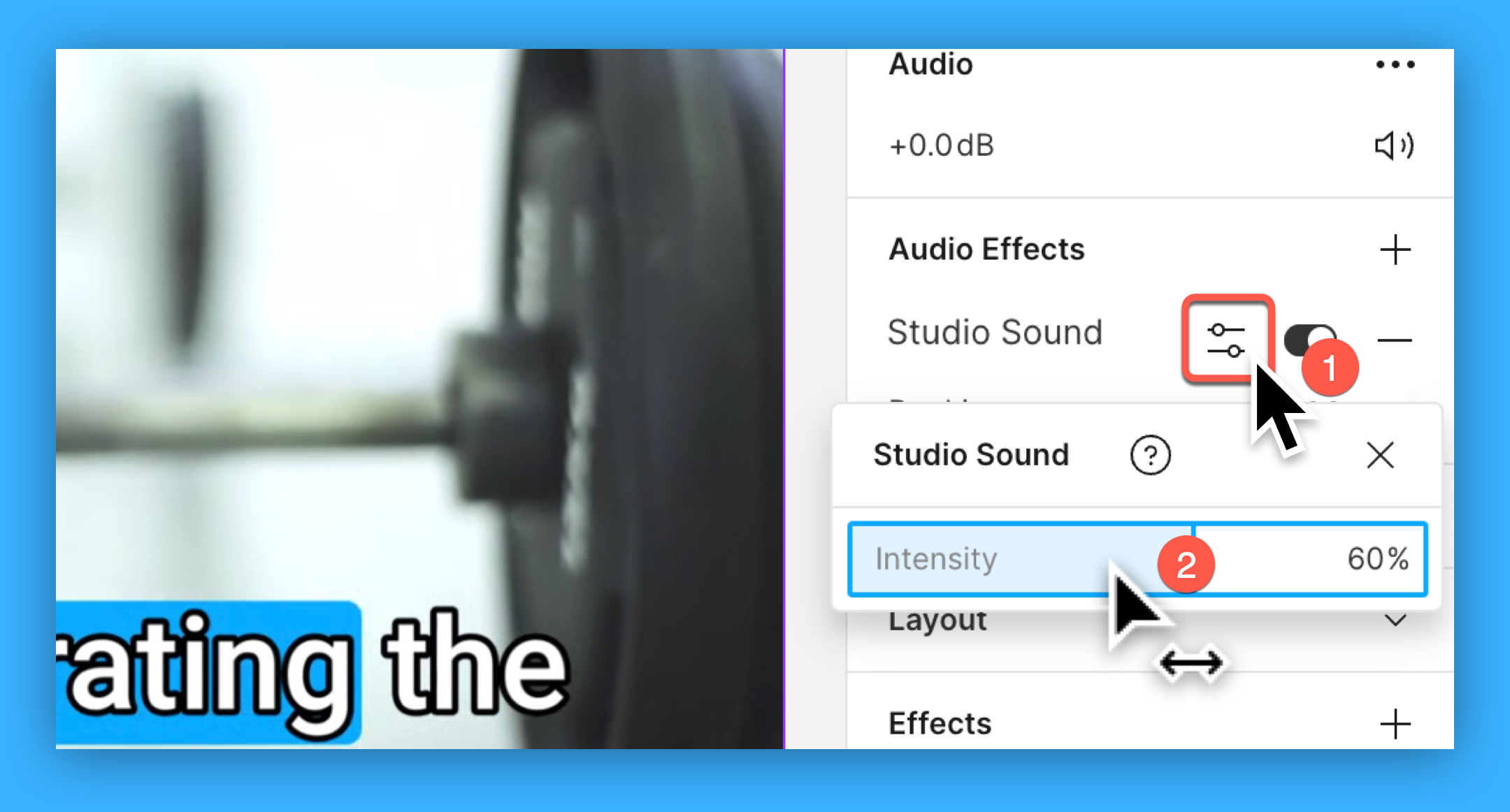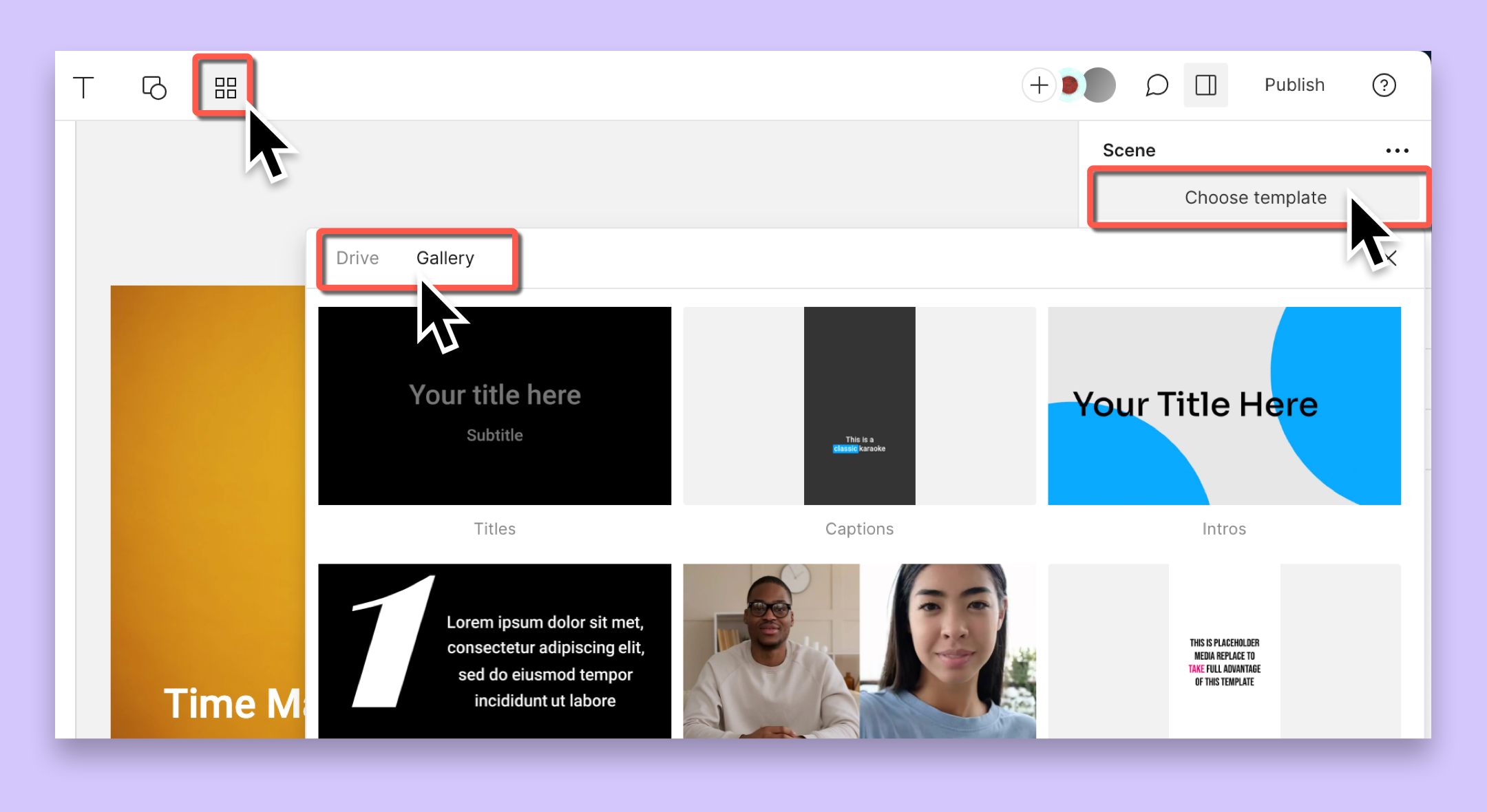If you’re creating podcasts or videos on a regular basis, chances are you have a pretty solid workflow. Taking time to learn new ways to streamline your workflow (like how to use Descript) feels worse than just shouldering on, no matter how many minutes the new techniques could save you.
Well, here’s the thing about minutes: they add up, fast. If you’re spending hours on every project, even when there are easier, more advanced methods out there, your likelihood of burnout is way higher than someone who's pumping out weekly videos, social clips, and bloopers in the same amount of time.
We think Descript is the best advanced method, of course. Matt Medeiros, the executive producer and host of the podcast Breakdown from Gravity Forms and publisher of The Podcast Setup newsletter, was able to offer us some of his insights for how Descript has helped him over the years.
“Descript shouldn’t be known as an app that makes podcast editing quick and easy, but an app that helps you produce high quality content, in a shorter amount of time.”
— Matt Medeiros, publisher of The Podcast Setup
Maybe it’s time to see just what this thing is all about.
Use Descript to edit audio and video faster
- Know when to edit in the script vs. canvas vs. timeline
- Memorize these keyboard shortcuts
- Remove filler words in one click (but keep a few)
- Fix audio with AI
- Use compositions to quickly repurpose content into clips
- Save time and create consistency with templates
- Share web links to collaborate and get feedback
1. Know when to edit in the Script, Canvas, or Timeline
Descript offers three different ways you can edit: the script, the canvas, and the timeline. It’s like the best of both worlds, with the addition of a third world you didn’t even know you needed.
The Script
As soon as you add your media to your project, Descript's state-of-the-art transcription services will automatically kick in. This super accurate transcription will appear on the left side of the screen in what's known as your Script. Once your transcription has finished, the real magic begins. Because now, you can edit your project the same way you would edit a Word doc.
Quickly delete entire sections by just deleting the text. Copy and paste chunks of dialogue to rearrange where the speakers come in. Highlight parts you need to come back to later, and paste your media directly into the paragraph.
Not only can you write, edit, and delete, you can also choose to ignore text—where you delete the media but can still see the words in the script (in strike-through). It’s a non-lossy way hear how things sound without that spoken section, and you can easily bring the dialogue back if you decide to keep it.
Pro tip: Mess up the first few takes? Say a silly word that will stand out in the transcript (I’m prone to shouting “Banana!”) and know you can delete all the text up to that cue.
The Canvas

When the transcript is locked and it’s time to get into the visuals, working in the Canvas will feel nice and familiar. If editing the script is like editing a Word doc, think of working in the canvas like editing a PowerPoint presentation.
The Canvas contains all of a scene’s visual elements—the video, templates, titles, captions, images, shapes, and so on. You can add, arrange, and adjust the elements by clicking on them in the Canvas. The Canvas also comes fully loaded with its own toolbar. This will allow you to quickly adjust the layout properties, like position, rotation, cropping, and layer order. Of course, if you're making an audio-only podcast, you won't need or see the Canvas.
The Timeline
Sometimes, there are finer nuances that need to be handled in a timeline. That’s why Descript still offers a timeline editor, which can easily be expanded and meddled in with the click of a button or hotkey (more on that later).
The timeline allows you to quickly add fades or crossfades to audio and video, change layer orders, and add more media. This is also a great place to work with music, sound effects, or scene transitions. You can even incorporate stock visuals from Descript’s library for extra punch. Just drop them into the timeline, and you’re ready to go.
2. Learn these keyboard shortcuts
Like any good editor, Descript comes fully stocked with pre-set keyboard shortcuts. You can always find the keyboard shortcuts in-app by clicking the “?” symbol in the upper right corner, or by hitting ⌥⌘K (Ctrl + Alt + K on Windows). We also keep a shortcut list in our Help Center.

Looking to jump right in? Here’s a handy cheatsheet of the best editing shortcuts. They’re the same for Mac or Windows:
Most of the shortcuts Descript offers are tried and true, but we do have one stand-out when it comes to injecting that disruptor startup AI tech into your project: ⌘K (Ctrl + K on Windows). Meet your new creative co-pilot: our Search Actions feature. Just start typing what you want to do, and Actions will take it from there.
Quickly add new layers, remove filler words, shorten word gaps, jump to sections, or search your script. Still can’t figure out what you need to do? Ask AI. You’ll see dozens of features to help you edit, find, publish, or write within your project.
3. Remove filler words in one click (but keep a few)
Filler words creep into every conversation, and there are definitely times and places where you want to keep them (check out 6 tips for removing filler words for more). But if those filler words feel distracting or unprofessional, trying to remove them is a major undertaking.
Good thing Descript lets you remove filler words with the click of a button. Nix them all, or do Matt's method: “I generally only pull out the 'ums' and 'ahs' from my conversations and trim the 'likes' more manually.”
Pair this with our script editor, and that manual process becomes a breeze. Matt has a quintessentially Descript process: “Instead of deleting, I’ll place a strikethrough in the script…When you listen back, you can simply remove the strikethrough on a particular filler word that you do want to keep.”
This helps leave spaces for important moments in the project, like when a guest is deep in thought.
4. Fix your audio with AI
No matter how many “Recording in process, do not disturb” signs you put up, audio issues happen: doorbells ring, trash trucks back up, friendly ghosts turn on your TV. Most listeners know you don’t have a state-of-the-art recording studio, but it does bring down the professionalism of your content. Cue: AI audio tools.
Studio Sound
Studio Sound is Descript’s professional-grade audio restoration and enhancement feature. It's an AI-powered audio saver that can enhance speakers' voices while reducing and removing background noise, room echo, and other sounds you don't want. It can be applied to all audio, and the intensity can easily be adjusted. The sidebar houses an intensity parameter that ranges from 0–100.

Leaving Studio Sound at 100% can push the audio quality too far, though. Matt has found his happy medium lies somewhere a little lower: “I think Studio Sound is great for quick enhancements, but I like to slide it back to around 75% as a baseline, then adjust from there.” Why not leave it at 100%? “It can feel overwhelming to listen to, and often filled with weird 'artifacts' in the sound,” Matt said. “Simply not natural.”
AI Speakers
One of Descript’s newest features is our suite of AI Speaker options. Seamlessly create a custom AI Speaker, generate text-to-speech content, overdub existing audio, and regenerate audio options as you edit.
In the past, if you misspoke while recording, you’d either have to cut it, live with it, or set up a frantic late-night ADR session. Now, all you have to do is create an AI version of your voice and overdub the original audio with the new dialogue. It’s text-to-speech, but no one will know.

Don’t like the inflection of the AI Speaker? Or think a cut in the audio is too abrupt? Regenerate the audio until it’s as seamless as you want it to be. This is a feature Matt is particularly excited about: “I think the Regenerate feature, currently in Beta, might be one that gets really good over the next year. I’ve used it in a few occasions that helped me smooth over cuts that were pretty harsh.”
Pro tip: Remove or swap backgrounds with Green Screen
Descript also has an AI-powered Green Screen feature that lets you remove or replace your video’s background—no actual green screen needed. If there’s a messy office (or friendly ghost cameo) lurking behind you, just enable Green Screen and swap it with an image or stock clip you want. It’s the easiest way to make your video look polished. Learn more here.
5. Use compositions to repurpose long-form content into clips
Odds are, the last thing you want to do after editing an hour long episode is edit shorter clips for social media. Luckily, Descript makes social clips easy.
There are a variety of methods you can use to keep track of your clip moments: highlight ideas as you go and duplicate them to a new composition, duplicate the whole composition and delete as you go, or just ask AI to find the highlights for you.
Once you have your content in a new composition, quickly adjust the aspect ratio in your canvas to your desired social media format. Add captions, throw on some GIFs, or leave it as-is. Just sit back, relax, and bring on that engagement.
6. Save time and maintain consistency with templates
Nothing’s worse than nearing the end of an edit and realizing you have to dig up the “LOGO_FINAL_FINALv5.png” file, not to mention how many HEX codes you have to search through before you remember which shade of blue you settled on for your logo.
No more half-attempts at branding. Now, Descript offers you quick and easy templates. Design or import them once and access them from every project. You can store your logos, music, intros, outros, and animations in one place.

Want to rethink your branding altogether? Peruse our impressive templates gallery, where we have ideas for titles, slides, annotations, overlays, and more. You can either use them as-is, or think of them as a launching point. Customize templates as you go and see where the fun takes you.
7. Share links to collaborate and get feedback
The creative process can quickly become a lonely one. Constantly trying to export new versions and keep track of notes is a headache. Good news: Descript was built with sharing features top-of-mind.
Collaboration works like Google Docs. Access control lets you decide who can leave comments, edit, or just view the project. Once you share your project with someone, they can open it and leave comments throughout the transcript. You’ll be able to see comments in real-time and reply. And, because projects are automatically synced to the cloud, you can even share it with colleagues who don’t have a Descript account.
You can also publish a web link to your project, which will create a page and shareable link where collaborators and colleagues can check out the audio or video, see the transcript, and leave comments.
Frequently asked questions
Is Descript good for beginners?
Descript is beginner-friendly because it lets you edit audio or video by editing text. You can remove parts of your recording by deleting words from the transcript—no need for complicated tools. This makes it easy for anyone new to editing.
What do you use Descript for?
People use Descript to create and edit podcasts, videos, and social media clips. It also includes features like transcription, remote recording, and AI audio tools, all in one place—so you can record, edit, and share without juggling multiple apps.
How do I transcribe using Descript?
Just import or record your audio or video in Descript, and it automatically generates a transcript. You can also drag files in, copy and paste a link from YouTube, or record right into Descript. The transcript shows up in the script panel, letting you edit by deleting text.
Are advanced editing features available on mobile devices?
Descript focuses on desktop and web-based editing for its full feature set. You can use a browser to access some features, but for most advanced tools—like timeline editing or Studio Sound—you’ll need Descript on your Mac or Windows computer.
































.jpeg)




